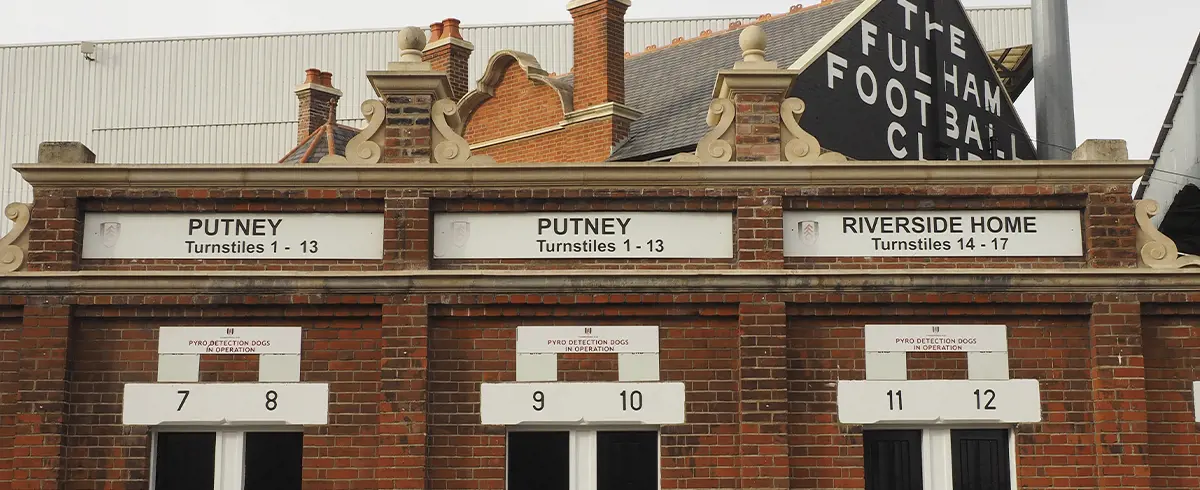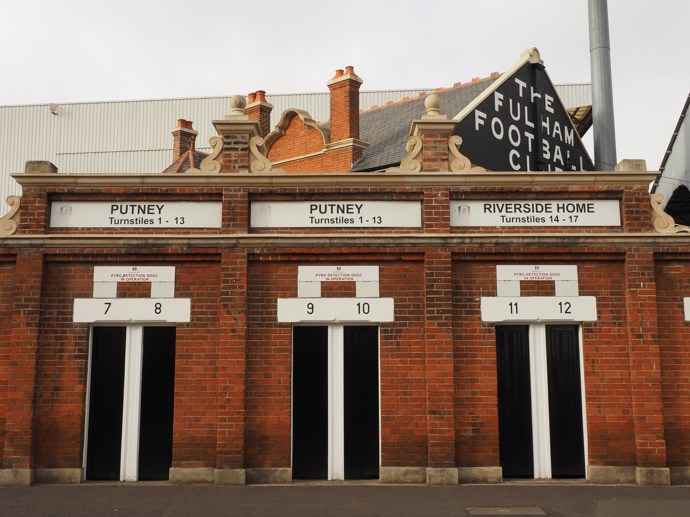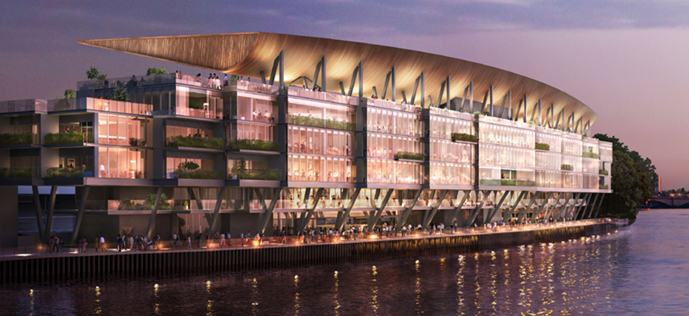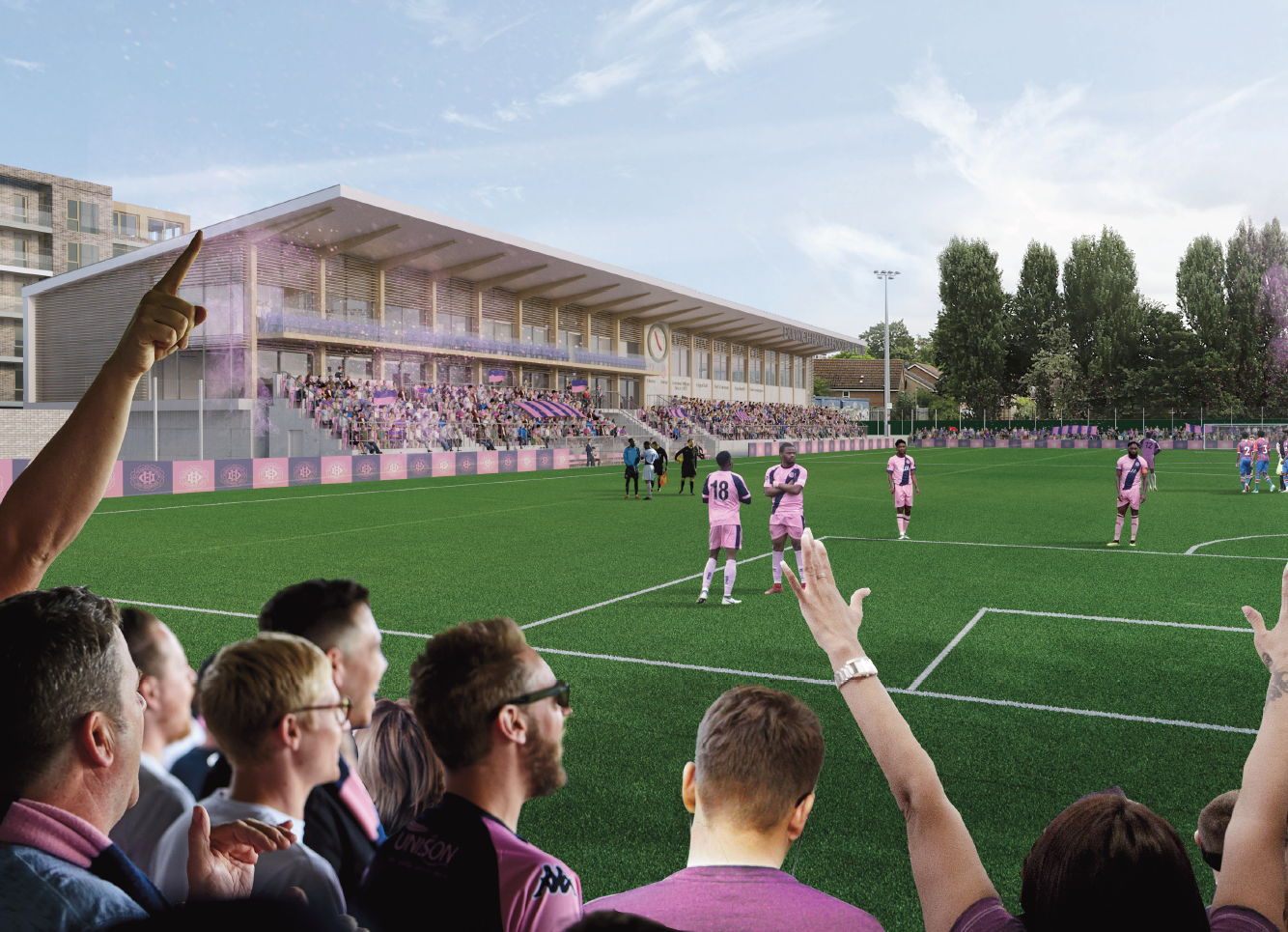In football anything can happen. As a Leicester fan I know this first hand; going from fighting a relegation battle one season to winning the league at 5000-1 odds the next (and no, I hadn’t put a tenner on that eventuality).
Despite football’s unpredictability, clubs need to plan for the future and remain one step ahead of the game to be competitive. For stadia, planning for the future often means: providing additional stadium capacity; expanding facilities to provide more diverse and regular income streams; and upgrading facilities to meeting new FA requirements.
The question of how football clubs put these plans into action varies greatly and is hugely dependant on a club’s financial position and objectives. Strategies range from: smaller scale and shorter-term upgrades to facilities; investment in new purpose-built stadium/facilities at or adjacent to an existing stadium; or development of a new stadium at an entirely new site. Increasingly, clubs are also seeking to introduce alternative uses to kick-start development and facilitate longer-term investment returns through an expanded non-matchday non-sporting offer.
Land availability, finances, investment returns (existing and anticipated), needs of the fanbase, the heritage of the club, mixed-use opportunities and environmental sensitivities are all factors influencing whether and how stadia and facilities are upgraded.
As with all redevelopment strategies, the decision on how to unlock new facilities needs to be carefully balanced against planning policy constraints. Green Belt, heritage and town centre policies are just some of the planning factors which can have a big influence. This blog – the third of a ‘hattrick’ of blogs – explores some of these influencing factors.
Home vs. Away: Is there a home advantage?
Some stadia have remained at the same ground for many decades; with urban development growing around them to create new development opportunities (through increasing land values and footfall) and challenges (through the introduction of amenity sensitive uses such as residential) for football clubs which need to be carefully navigated by redevelopment proposals.
Football architectural historian Simon Inglis
comments that Manchester United’s Old Trafford (opened in 1910) was the first to have a long-term masterplan from the start; providing scope for incremental expansion on a large unencumbered site.
Whilst a stadium masterplan is now commonplace (particularly in the Premier League), few clubs initially followed Man Utd’s lead; ending up on cramped sites which evolved through ad-hoc organic expansion. Some clubs have made this work; harnessing the unique character and heritage of sites to their advantage and finding innovative ways to expand.
Fulham Football Club’s Craven Cottage oozes character and includes two listed buildings. The new Riverside Stand currently being built will sensitively balance the heritage of the site with the desire to establish an iconic building as a positive landmark along the river, capable of supporting a diversified food, beverage and hospitality offer; providing an enhanced stadium and truly mixed-use destination in its own right on the banks of the River Thames.
Other stadia strategies involve relocating stadia to new locations.
Highbury was the historic heart of
Arsenal Football Club dating back to 1913. After the Gunners famous 2003/04 ‘Invincibles’ season, Arsenal moved to the Emirates Stadium in 2006 – boosting capacity by over 20,000. Highbury was then partially demolished and redeveloped to provide 655 new home via
Allies and Morrison’s Highbury Square development. Part funding the stadium move, the Highbury Square development incorporates the listed East and West Stands and reinvents the pitch as a communal garden. Whilst Wenger claims
‘we left our soul at Highbury’, and a programme of ‘Arsenalisation’ was needed to invigorate the spirit of Highbury, the stadium has created new opportunities beyond football, including conferencing and live music events.
Infamously, Wimbledon Football Club, after rejecting a variety of possible local sites, moved from south London to Milton Keynes in 2003. This ultimately splintered the club, spurring the creation of AFC Wimbledon and the rebranded MK Dons. AFC Wimbledon is now in the process of building a new stadium close to its spiritual home of Plough Lane as part of a joint venture with Galliard Homes. Alongside the stadium, the scheme includes 600 new homes, a squash and fitness club and retail space.
Substitution
Where more comprehensive upgrades are needed, new stadia redevelopment strategies can often involve building a new stadium next to the existing ground. The has the benefit of unlocking the redevelopment potential of the former stadium site and – on occasions – providing a smoother transition to a new ground through less interruption to home games (and associated match-day income streams).
For lower league clubs with a greater reliance on match-day revenue, the importance of minimising interruption to home games and catalysing redevelopment through alternative uses are crucial factors in unlocking new facilities.
Established in 1893, Dulwich Hamlet Football Club (DHFC) is one of the oldest league sides in London and has been part of the Dulwich community for over 125 years, with Champion Hill being DHFC’s home for the majority of that period.
Located on the same plot as the current stadium, the former stadium (‘The Hill’ – built in 1931) was demolished as it was in a poor state of repair and did not meet the safety standards of the time. The current stadium was then rebuilt on the same site in 1991, funded by development of the Sainsbury’s supermarket on the Club’s former training pitches next to the site.
Whilst the current stadium was built to meet prevailing standards, the stadium is now reaching the end of its economic life and is no longer fit for purpose. The grass pitch cannot be used intensively without compromising the quality of pitch and the existing stadium site cannot be upgraded to meet FA requirements of the league above (the National League) due to site constraints.
To meet these requirements, DHFC must increase the capacity of the stadium to 4,000 spectators and provide specific additional facilities for players, officials and the press. In addition, the club has a number of core redevelopment objectives which include supporting the local community and keeping the club profitable. Moving out of Dulwich was not an option (viable or otherwise).
The solution is a new stadium next to Champion Hill. A new 3G pitch and community stadium/leisure facility will enable DHFC to generate a sustained source of income on non-match-days and meet its community objectives by allowing use of the facilities by local school and community groups.
Residential redevelopment of the existing stadium site to provide around 200 new homes plays an enabling role by funding the new stadium and leisure facility. Phasing allows for players to use interim facilities at the current stadium whilst the new stadium is being built. The development aims to deliver a win-win for the club and local community, whilst sensitively and innovatively responding to the setting of the new pitch in Metropolitan Open Land.
The new stadium will have far reaching and wider benefits for the local community, including underpinning the important work DHFC does with the local community and charities.
Key Factors Influencing Development Strategies
There is no one size fits all solution to how football clubs improve their facilities.
Decisions on how to provide new facilities are influenced by a myriad of factors which are often locational specific and strongly influenced by the philosophy of the club and its fanbase.
A common thread is the increasing co-location of residential, leisure, retail and food/beverage uses alongside stadia (as touched on in
Ian’s earlier blog) and joint venture partnerships with developers. The mixed-use approach not only provides a diversified source of income (if managed by football clubs in the longer term) but also acts as a catalyst to kick-start and fund redevelopment proposals through enabling investment in new facilities through the increased value.
Successful strategies, whether they involve refurbishment/expansion or creation of an entirely new stadium, depend on capturing the development opportunities to meet the needs of the club and articulating the scheme benefits to secure support from local communities and decision makers.
With discussions turning to how stadia will reopen to fans, short and long-term planning strategies for clubs, stadia and facilities will become increasingly important as normal play begins to resume.







